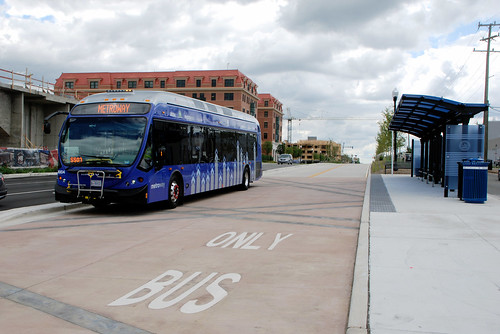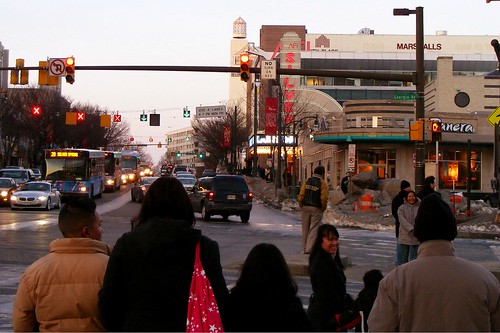Despite a big funding setback last week, Montgomery County could start building bus rapid transit after all. But to do so, it may have to do it on the cheap. That could mean making BRT less useful for transit riders.
Montgomery County officials have been looking at building rapid transit routes for buses since 2008, and approved plans for a countywide BRT network in 2013. County Executive Ike Leggett had proposed creating a transit authority that could raise taxes to pay for building it, but yanked the idea last week due to opposition from some community members.
Yesterday, he announced that the county would build one or two of its planned BRT routes in a "less costly" fashion. One way to cut costs is by taking out dedicated lanes that give buses a way out of traffic. But doing that would make BRT slower and less reliable, discouraging people from using it.
 |
| BRT in Alexandria. Montgomery County might get this sooner rather than later. Photo by Dan Malouff. |
Yesterday, he announced that the county would build one or two of its planned BRT routes in a "less costly" fashion. One way to cut costs is by taking out dedicated lanes that give buses a way out of traffic. But doing that would make BRT slower and less reliable, discouraging people from using it.

